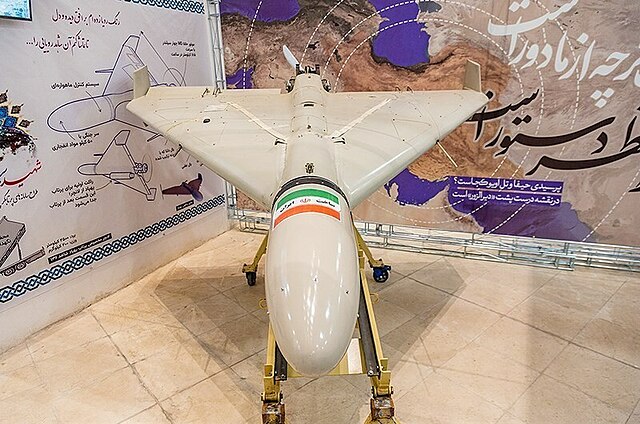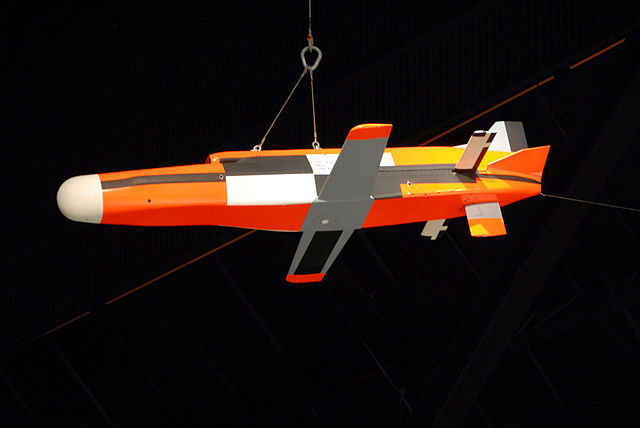A loitering munition, also known as a suicide drone, kamikaze drone, or exploding drone, is a kind of aerial weapon with a built-in warhead that is typically designed to loiter around a target area until a target is located, then attack the target by crashing into it. Loitering munitions enable faster reaction times against hidden targets that emerge for short periods without placing high-value platforms near the target area and also allow more selective targeting as the attack can be changed mid-flight or aborted.
An Iranian HESA Shahed 136 long range loitering munition
Northrop AGM-136 Tacit Rainbow on display at the National Museum of the U.S. Air Force in Dayton, Ohio
IAI Harpy first-generation loitering munition for SEAD role
Loitering Munitions HERO (UVision Air Ltd, Israel), DSEI 2019, London
Unmanned combat aerial vehicle
An unmanned combat aerial vehicle (UCAV), also known as a combat drone, fighter drone or battlefield UAV, is an unmanned aerial vehicle (UAV) that is used for intelligence, surveillance, target acquisition, and reconnaissance and carries aircraft ordnance such as missiles, anti-tank guided missiles (ATGMs), and/or bombs in hardpoints for drone strikes. These drones are usually under real-time human control, with varying levels of autonomy. UCAVs are used for reconnaissance, attacking targets and returning to base; unlike kamikaze drones which are only made to explode on impact, or surveillance drones which are only for gathering intelligence.
A British MQ-9A Reaper operating over Afghanistan in 2009
A Turkish Bayraktar TB2 on the runway
The BAE Taranis model is one of the larger designs
DRDO Ghatak








